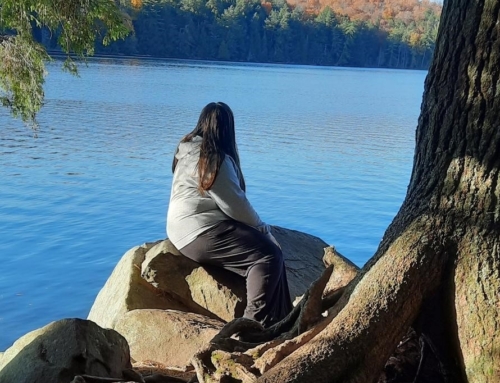It was close to a decade ago that I, and a delegation from Christian Horizons, visited the headquarters of Bethesda Lutheran Communities (now AbleLight) in Watertown, Wisconsin. David Morstad was Executive Director of the Bethesda Institute at the time, and showed us not only warm and delightful Wisconsin hospitality but the advanced training, research, and faith resources that he and his team developed. David was also behind a multi-year partnership that provided a foundation for the Institute on Theology and Disability (theologydisability.org) to flourish and inspire cutting-edge theology and the intersection of disability – if “cutting edge” is an adjective that can be applied to the study of the eternal! The visit to Wisconsin left a lasting impression on me, and provided a template for the direction of many of Christian Horizons’ faith resources and our ongoing support for the Institute on Theology and Disability

Since that first visit, I have gotten to know David better and appreciate not only his friendship but his decades of experience in supporting people with intellectual and developmental disabilities and their families. Following a restructuring at Bethesda and the closure of the Bethesda Institute, David has gone on to chair the Wisconsin Governor’s Committee for People with Disabilities and to write at largertable.com. I have only just gotten around to reading his 2018 book, Whole Community: Introducing Communities of Faith to People with Intellectual and Developmental Disabilities but wanted to share a review of this book, as I regret not having read it sooner.
Whole Community is written in an easy-to-understand manner. Morstad’s years of communicating to a wide audience are apparent in his writing style, which goes to show that complex ideas along with historical information can be conveyed in ways that are accessible and engaging. Through seven chapters, Whole Community tackles a wide range of topics and questions – from eugenics, criminal justice, and the history of disability (particularly intellectual and developmental) in the United States to meaningful stories, personal reflection, and helpful insights into the ways that communities of faith can be transformed by welcoming and fully engaging people with disabilities. Theology (as regards to healing, perception of disability as a blessing or curse, “sainthood” of caregivers, etc.) informs Whole Community but does not take it over. Readers will not find themselves down abstract theological bunny-trails, but instead the intent is to reflect theologically when it is called for.
Morstad stresses that,
“The future calls for a collaborative framework that pulls together the human services system, natural family support, active self-advocacy, but most of all, community. Faith communities are unique and indispensable players in the new landscape.” (39)
To this end, the structure of Whole Community dives into the intersections within this collaborative framework. Social service professionals will learn about the integral role of faith communities and disability justice history in the United States. Advocates will learn about helpful ways to engage with these respective parties and past efforts. Faith communities will begin to understand the crucial and critical ways that they are needed in the ongoing story of disability history in the United States and beyond.
As Morstad rightly observes, “the notion of actively supporting spiritual expression still scares many professional service provider organizations” (79). Yet, so many people across North America depend on service professionals for access and transportation to faith communities and spiritual activities! Support people can be a tremendous asset for churches or faith communities looking to connect with potential congregants with disabilities, but they can also be the greatest impediment to people engaging in a meaningful way with their communities of faith.
Ultimately, though, the way forward will not be paved by resources such as Morstad’s book or service providers. It will be navigated in relationship with people with intellectual and developmental disabilities themselves. As Whole Community makes clear, it is people with lived experience who are experts on the best way forward. “The most powerful and effective act that people without disabilities can take is to yield to the voice of people with disabilities” (60). To get to this point, though, society and our faith communities need to foster an openness and excitement for being “whole communities” where everybody belongs. “All forced inclusion eventually gives in to a clumsiness of implementation,” (78) and so people in communities of faith have a unique role in promoting spaces of advocacy, friendship, growth, etc. At the end of Whole Communities, Morstad makes a compelling case for the reasons why faith communities are in a crucial position to help transform our society into places of “justice, equality, and mutuality” (110) despite the messiness inherent in wrestling through these things together.
While it took me too long to get around to reading Whole Community: Introducing Communities of Faith to People with Intellectual and Developmental Disabilities (as with many of the books on my “to-read” list!) I am very glad that I did. It is a short book that packs a wealth of information, inspiration, and education into a readable and engaging volume.


